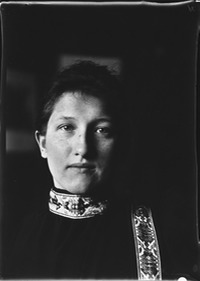Reclining nude 89x146 cm ca. 1889

At the end of the 19th century Breitner's fame as a painter was mainly based on his impressionist town views and citylife paintings of Amsterdam. Art critics of the day were divided on the nudes and girls in kimono he painted between 1885 and 1895. Some critics considered Breitner's realistic nudes as obscene and a danger for morality. Others praised his nudes as daring and delightfullly painted in juicy, highly refined colours and compared him with Manet.
Breitner himself felt insecure about his nudes, he used to qualify them as 'studies' and was anxious about the response of the Parisien public when some of his nudes were sent to Paris for a exhibition.
Without doubt Breitner's loosely painted nudes are not Greek goddesses or mythological nymphs painted in the classical tradition. They are real women of flesh and blood seen with the eye of the connaisseur Breitner , and made with much dedication and craftmanship. So it is not surprising that two of Breitner's nudes were nominated for the recent Miss Holland contest (the best nude in the history of Dutch painting) organized by the Dutch art magazine Oog.
Most of Breitner's models were common Amsterdam working class girls . Two of his regular models were Lise Jordan and her sister Marie Jordan, the woman he married in 1901 when he was 44 years old.
At that time Breitner was at the peak of his fame and was honoured with a great retrospective exhibition in Amsterdam. His controversial nudes were conspicuous absent on the retrospective. The story goes that just married Breitner had to concede to the wish of his new wife and former model Marie Jordan to exclude the nudes from the retrospective.


